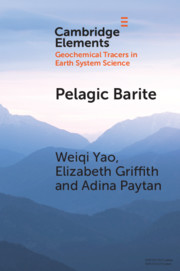Element contents
Pelagic Barite
Published online by Cambridge University Press: 23 December 2020
Summary
Keywords
- Type
- Element
- Information
- Online ISBN: 9781108847162Publisher: Cambridge University PressPrint publication: 28 January 2021
References
Primary Sources
Secondary Sources
- 9
- Cited by

